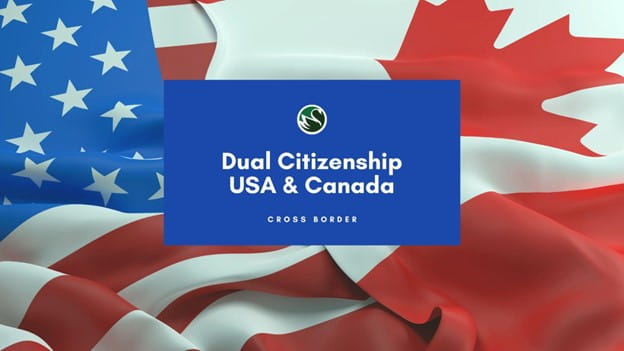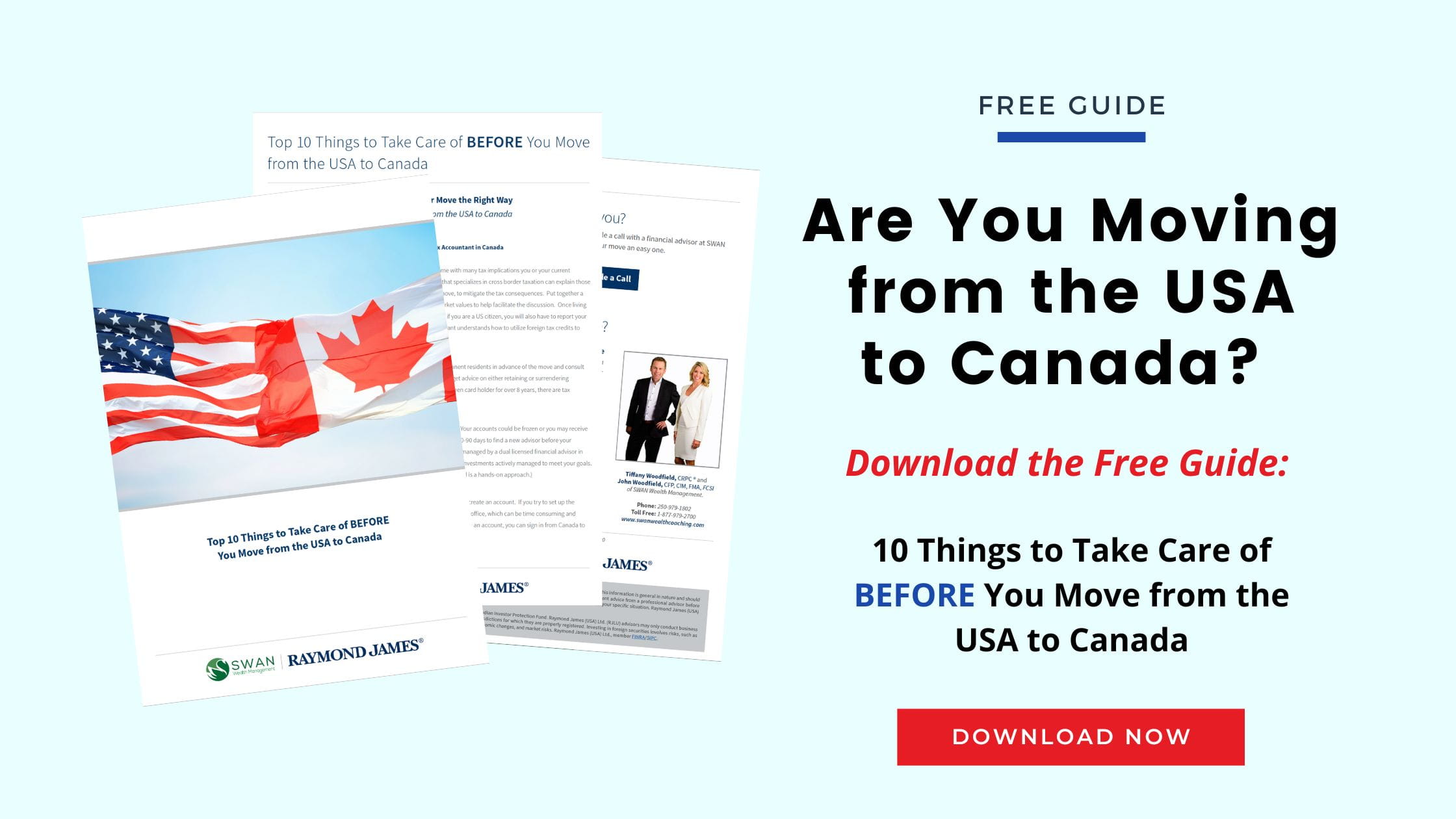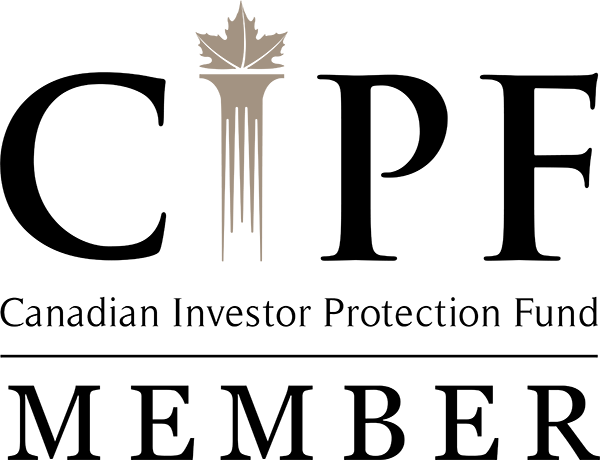Dual Citizenship: USA Canada Guide
Written by John Woodfield Portfolio Manager, CFP®, CIM® and Tiffany Woodfield, Associate Portfolio Manager, CRPC®, CIM®

Cross-Border Tips for American and Canadian Dual Citizens
If you're already a U.S. or Canadian citizen considering becoming a dual citizen of Canada and the U.S., then this article is for you.
As a cross-border financial advisor, I work with clients in the U.S. and Canada daily. Many of our clients are dual citizens.
If you're already a dual citizen or planning on becoming one, it’s critical that you approach your financial and tax planning the right way. Doing your cross-border planning correctly will enable you to avoid major pitfalls, some of which I will go into later in this article. But first, we'll cover some of the basics of how dual citizenship works between Canada and the U.S., as well as the benefits and downfalls of being a dual citizen.
Please note that this article is general, and you should get help from a cross-border lawyer or read the relevant government resources before taking action.
TABLE OF CONTENTS
- How To Become a U.S.-Canada Dual Citizen
- Benefits of Being a Dual Citizen in the U.S. and Canada
- Pitfalls of Dual Citizenship
- Basic Requirements To Become an American Citizen
- Basic Requirements To Become a Canadian Citizen
- How to Apply for Canadian Citizenship
- How to Apply for American Citizenship
- Doing Your Taxes as a Dual Citizen in the USA
- Doing Your Taxes as a Dual Citizen in Canada
- Getting Started With Cross-Border Financial Planning
- Working With a Cross-Border Financial Advisor
- Putting Together Your Cross-Border Team
- Common Questions About U.S.-Canada Dual Citizenship
How To Become a U.S.-Canada Dual Citizen
Regarding dual citizenship in Canada and the U.S., it's important to note that there isn't a distinct application process for acquiring it.
Instead, you become a dual citizen if you hold citizenship in the U.S. or Canada and subsequently obtain citizenship in the other country without formally renouncing your original citizenship.
Thus, you don't need to apply for dual citizenship in the U.S. and Canada; you simply need to be a citizen of both countries and avoid renouncing.
Benefits of Being a Dual Citizen in the U.S. and Canada
Dual citizenship in the U.S. and Canada offers many advantages.
As a dual citizen, you have the right to live, work, and study in both countries without requiring visas or facing the usual restrictions imposed on foreign nationals. Additionally, dual citizens benefit from both nations' healthcare systems and social services, enjoying a broader safety net.
In addition, having both a Canadian passport and an American passport can open up travel opportunities that might have been previously limited. For example, Brazil, Turkey, United Arab Emirates, and Saudi Arabia are all places where travellers with Canadian passports can enter more easily, though this can change.
In addition, Canadians aged 18 to 30 can take advantage of the Working Holiday Visa program in the U.K. and Australia.
Dual citizens can participate in the political processes of both countries, including voting.
However, understanding the legal and tax implications of dual citizenship is crucial. It is complex but manageable with proper guidance.
Pitfalls of Dual Citizenship
The biggest pitfalls of dual citizenship are related to taxation and financial planning.
Dual citizens must navigate two sets of laws and tax systems, often leading to complicated tax filings and the potential for double taxation.
Understanding and complying with the regulations of both countries can be daunting, requiring careful planning and professional guidance. Additionally, there are implications for estate planning and investment strategies, as different rules apply in each country. Dual citizens must stay informed and seek expert advice to mitigate these challenges and avoid legal pitfalls.
Basic Requirements To Become an American Citizen
- Age Requirement: Must be at least 18 years old.
- Residency Status: Hold lawful permanent resident status (Green Card) for at least five or, three years, if married to a U.S. citizen.
- Continuous Residence: Must have continuous residence in the U.S. for the required period.
- Physical Presence: Must have been physically present in the U.S. for specific time frames.
- English Proficiency: Ability to read, write, and speak English.
- Knowledge of U.S. History and Government: Pass a civics test demonstrating this knowledge.
- Good Moral Character: Demonstrated good moral character and adherence to principles of the U.S. Constitution.
- Oath of Allegiance: Willingness to take and uphold the Oath of Allegiance to the United States.
During the naturalization process, the required period of continuous residency for naturalization as a U.S. citizen depends on your specific circumstances:
- General Requirement: Typically, an applicant must have been a lawful permanent resident (Green Card holder) for at least five years before applying for citizenship.
- Exceptions for Spouses of U.S. Citizens: If you are married to a U.S. citizen, the requirement is reduced to three years of lawful permanent residency.
During these periods, applicants must demonstrate continuous residence in the United States, meaning they should not have taken trips outside the U.S. that lasted for six months or more, as this could break the continuity of residence. However, it's important to note that each case can have unique factors, and exceptions or waivers might apply in certain situations.
I recommend seeking the advice of a cross-border lawyer if your situation is complex.
Basic Requirements To Become a Canadian Citizen
- Age Requirement: Must be at least 18 years old or a minor child of a parent applying for citizenship.
- Permanent Resident Status: Must have permanent resident status in Canada and have no unfulfilled conditions related to this status.
- Residence in Canada: You must have been physically present in Canada for at least 1,095 days (three years) out of the five years before applying.
- Income Tax Filing: Must have filed income taxes, if required under the Income Tax Act, and you must have filed income taxes for at least three years within the five years.
- Language Skills: Proficiency in either English or French, including the ability to speak and understand.
- Knowledge of Canada: Pass a test on rights, responsibilities, and knowledge of Canada's history, values, institutions, and symbols.
- Prohibited Circumstances: Not under a removal order, not a security risk, and not criminally prohibited.
These requirements serve as a general guideline, and applicants should check for any updates or additional criteria that might apply to their situation.
How to Apply for Canadian Citizenship
- Check Eligibility: Ensure you meet the basic requirements, such as the minimum number of days lived in Canada, tax filing, and language proficiency.
- Gather Documents: Collect necessary documents, including your permanent resident card, travel documents, income tax records, and other relevant paperwork.
- Attain Language Proof: Provide proof of your language skills in English or French if you are between 18 and 54 years old.
- Complete the Application Package: Obtain and fill out the application package, including a guide with detailed instructions and all the necessary forms.
- Pay the Fee: Calculate and pay the citizenship application fee, which varies depending on your age and other factors.
- Submit the Application: Mail your completed application, the necessary documents, and fee receipt to the appropriate Canadian government office.
- Attend the Interview/Test: Be prepared to attend an interview or take a citizenship test, where your knowledge of Canada and language skills will be assessed.
- Wait for a Decision: After processing, you will receive a decision on your application. If successful, you'll be invited to a citizenship ceremony.
- Take the Oath of Citizenship: At the ceremony, you'll take the Oath of Citizenship, which is the final step in becoming a Canadian citizen.
Each step requires careful attention to detail to ensure all criteria are met and your application is complete and accurate.
For more information, refer to this resource page on the Canadian Government website.
How to Apply for American Citizenship
- Confirm Eligibility: Verify that you meet all the basic requirements for naturalization, such as age, permanent residency status, and continuous residence in the U.S.
- Prepare Form N-400: Complete the Application for Naturalization (Form N-400). Ensure all information is accurate and complete.
- Gather the Required Documents: Collect necessary documents, including your Green Card, travel records, and any additional information that supports your application.
- Get Photographs: Depending on your location, you may need to provide passport-style photographs.
- Submit the Application and Fee: Send your completed Form N-400 and supporting documents to the U.S. Citizenship and Immigration Services (USCIS) along with the necessary fee. Fees can be checked on the USCIS website, as they are subject to change.
- Attend Biometrics Appointment: Attend a biometrics appointment, if required, where your fingerprints will be taken for a background check.
- Interview and Test: Prepare for and attend an interview with a USCIS officer. You will also take an English and civics test unless you qualify for an exemption or waiver.
- Get a Decision on Application: USCIS will notify you of their decision in writing. You will receive a notice to take the Oath of Allegiance, if approved.
- Take the Oath of Allegiance: Attend the naturalization ceremony and take the Oath of Allegiance to the United States. This is the final step in becoming a U.S. citizen.
- Receive a Certificate of Naturalization: After the oath ceremony, you will receive your Certificate of Naturalization, confirming your status as a U.S. citizen.
For more information, refer to this resource on the U.S. Government website.
Doing Your Taxes as a Dual Citizen in the USA
Fortunately, as a dual citizen of Canada and the USA, who is living in the USA, you do not have to file a Canadian tax return (in most cases).
You must file a U.S. tax return the same as any other U.S. citizen. If you have property or investments in Canada, this may complicate matters, but a qualified accountant, who is well-versed in cross-border taxation, will be able to sort this out, so you are not double-taxed.
Canada has a robust tax treaty with the USA, designed to avoid double taxation. The treaty also enables tax deferral plans such as IRAs, ROTH IRAs, RRSPs, RRIFs, and pensions to remain tax-sheltered. There are potential issues with plans such as Canadian TFSAs since these were not around when the tax treaty was constructed. Therefore, the TFSA is not recognized in the USA.
Doing Your Taxes as a Dual Citizen in Canada
U.S. citizens living outside the U.S. must file U.S. taxes yearly.
However, there is the potential for double taxation if proper records are not kept and if proper accounting procedures are not followed.
When moving to Canada from the USA, a U.S. citizen must track the cost of their investments for both U.S. and Canadian taxes. This involves setting a new Canadian “cost basis” when entering Canada and keeping track of the U.S. cost base from the start of the investment. A cross-border financial advisor can track both of these numbers for you and ensure your accountant gets the correct information at the end of the year. Make sure you find someone who is a fiduciary financial advisor and dual-licensed.
The other item that must be watched is PFICs (passive foreign investment company).
These are investments and investment structures for which the IRS demands additional paperwork. This drives up accounting costs and can cause unnecessary headaches. Canadian mutual funds and Canadian exchange-traded funds are two main areas that should be avoided due to PFICS.
Getting Started With Cross-Border Financial Planning
As a Canadian becoming a U.S. citizen or an American becoming a Canadian citizen, planning is the solution to most potential pitfalls.
A good plan will look at your goals, assets, investments and a variety of other areas to ensure that your move is smooth and easy.
As above, many investments can be held solely by U.S. citizens or solely by Canadian citizens that dual citizens cannot hold. Also, which country you live in dictates various other rules around tax filings and assets allowed to be owned. Even state by state in the U.S. is different with their investment rules and how items are taxed.
For example, California doesn’t treat RRSPs the same as the federal government. This means, you may be taxed on the income and/or growth in an RRSP even before the money is taken out of the RRSP. Capital gains on RRSPs for California residents can be taxed back to initial purchase. Working with a cross-border accountant on tax planning before entering California can help to reduce future taxation.
Working With a Cross-Border Financial Advisor
Finding a quality cross-border advisor is difficult since few advisors are licensed in Canada and the USA.
Also, even fewer are certified financial planners who are well-versed in cross-border planning. Even fewer are portfolio managers with experience across many states and all provinces. We recommend asking friends and family for referrals to planners, looking at qualifications and making sure there is a fit with the team you choose.
We also recommend working with a team that has a cross-border accountant on staff who can answer complex questions. This level of expert advice should be part of the package and not an additional cost. This accountant will give advice and make sure you are on the right path. A qualified tax accountant completes the actual accounting and is typically not part of the planning service.
The first qualifications you should seek out are Canadian and U.S. licensing as an investment advisor. The team you are looking at should have a portfolio manager, a Chartered Financial Planner and an accountant. The depth of the team is vitally important since this is a complex area.
Putting Together Your Cross-Border Team
As mentioned above, there are many parts to creating your cross-border financial and investment plan.
Avoiding tax pitfalls such as double taxation and holding investments that create problems such as additional and expensive tax filings is paramount. Your advisory team should have in-depth knowledge of Canadian and U.S. taxes and the investment ability to move into areas that do not cause investment issues, no matter which side of the border you reside on.
The team must have cross-border licensed advisors, cross-border taxation experts (CPAs), and licensed assistants versed in your particular needs. In short, working with a team dedicated to cross-border investment and planning is best.
For example, at SWAN, clients often contact us when they are very close to making a cross-border move. So far this year, we have worked with individuals and families who came to us very close to their move date. They were panicked about the process, what to do with their investments, what the future looks like, and even how to make the move physically.
We took them through our process and brought Sam, our team CPA, on the calls with each of them. This created a roadmap. Then, we created a full financial plan, consolidated their investments, and moved away from holdings that would cause an issue in their new country.
The word we often hear when clients find us is “finally.” Having said this, each cross-border advisor has their style, and SWAN is not a fit for everyone. We suggest doing your research and ensuring that the relationship you enter into is one you can be comfortable with for many years.
Common Questions About U.S.-Canada Dual Citizenship
Q: Can a U.S. citizen have dual citizenship in Canada?A: A U.S. citizen can have dual citizenship with Canada without losing their U.S. citizenship.
Q: Does the U.S. allow dual citizenship?A: The United States allows dual citizenship with other countries, including Canada.
Q: How much does it cost to apply for Canadian Citizenship?A: As of this writing, the application fee for Canadian citizenship is CAD 630 for adults and CAD 100 for minors.
Q: How long does it take to become a Canadian citizen?A: The process typically takes around 12 months but can vary based on individual circumstances.
Q: Can I leave Canada after I mail my citizenship application?A: You can leave Canada after submitting your application, but you must be present for the citizenship test and ceremony.
SUMMARY OF KEY POINTS
- There is no distinct process for U.S.-Canada dual citizenship. You obtain each separately without renouncing the other.
- Dual citizenship allows living, working, and studying in both countries without usual foreign national restrictions.
- Navigating dual taxation and legalities requires professional advice for compliance and planning.
- U.S. citizenship requires being 18+, having a Green Card, continuous residence, English proficiency, and passing a civics test.
- Canadian citizenship requires being 18+, permanent residency, physical presence in Canada, tax filings, and language proficiency.
- Dual U.S.-Canada citizens file taxes in both, but tax treaties prevent double taxation in many cases.
- Work with cross-border financial advisors for tax and investment planning, crucial for dual citizens.
NEXT STEPS
If you’re a Canadian resident or are planning on moving to Canada and need assistance with moving and optimizing your investments, estate planning, wealth management and portfolio management, please get in touch. At SWAN Wealth, we specialize in Canadian financial planning, cross-border financial planning and cross-border wealth management.
READ MORE
If you’re planning a cross-border move, these articles and guides will help simplify your move and ensure you’ve covered everything.
Moving to Canada from the U.S.
Cross-Border Estate Planning Guide
Certified Financial Planner in Canada - Finding a Fiduciary
ABOUT THE AUTHORS
Tiffany Woodfield is an Associate Portfolio Manager licensed in Canada and the USA, a Chartered Investment Manager (CIM), a Chartered Retirement Planning Counselor (CRPC) a STEP Associate and the co-founder of SWAN Wealth Management, along with her husband, John Woodfield. Tiffany advises clients who live in Canada and the United States and want to simplify their cross-border financial plan, move their assets across the border, and optimize their investments to minimize their tax burden. Together, Tiffany and John Woodfield help their clients simplify their cross-border finances and create long-term revenue streams that will keep their assets safe, whether they live in Canada or the U.S.
John Woodfield is a Financial Management Advisor (FMA), a Chartered Investment Manager (CIM), and a Certified Financial Planner (CFP), and in 2007, was inducted as a Fellow of the Canadian Securities Institute (FCSI). As a portfolio manager and CFP®, he works with clients across Canada. John Woodfield’s clients are families, individuals and business owners who understand the importance of comprehensive wealth and investment plans driven by the lifestyle they want to lead.
SCHEDULE A CALL
Schedule a 15-minute introductory call with SWAN Wealth Management. Click here to schedule a call.





